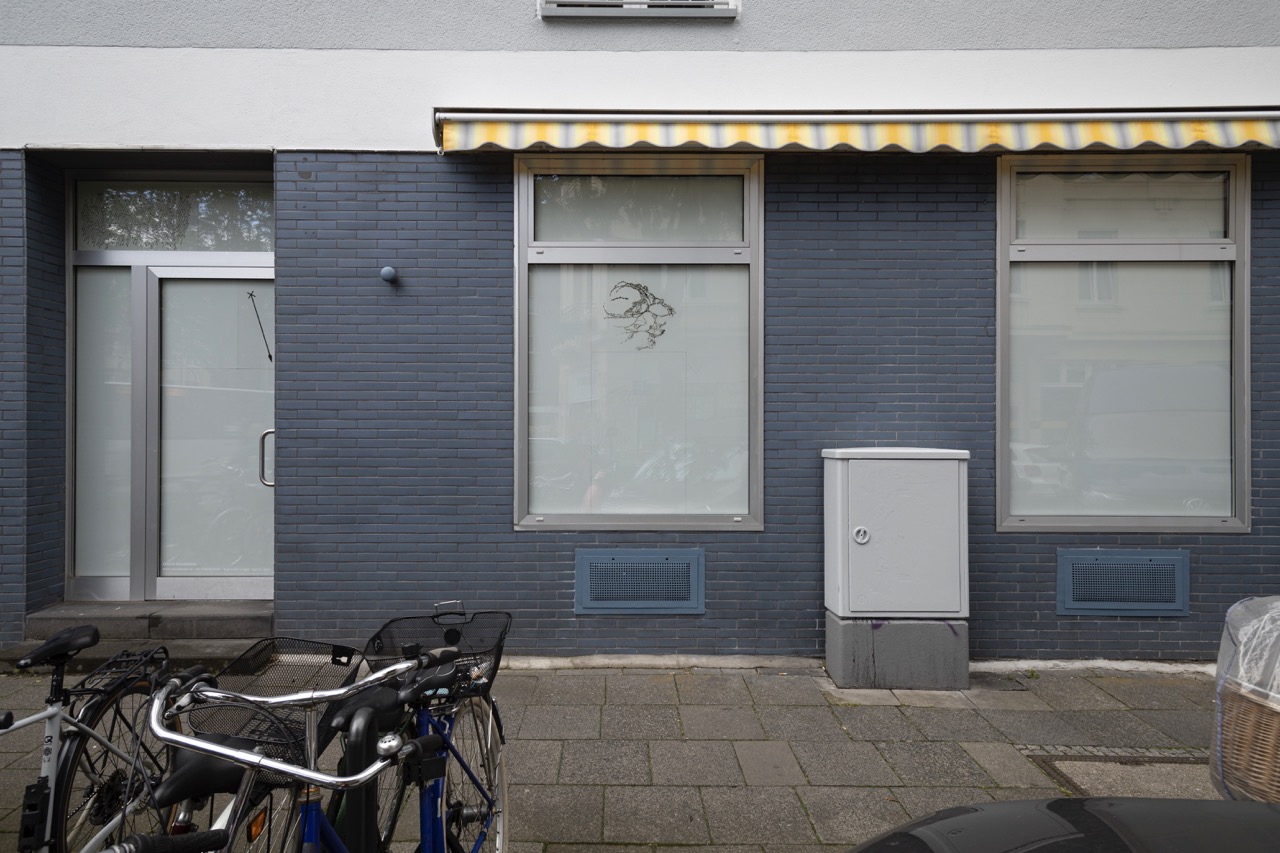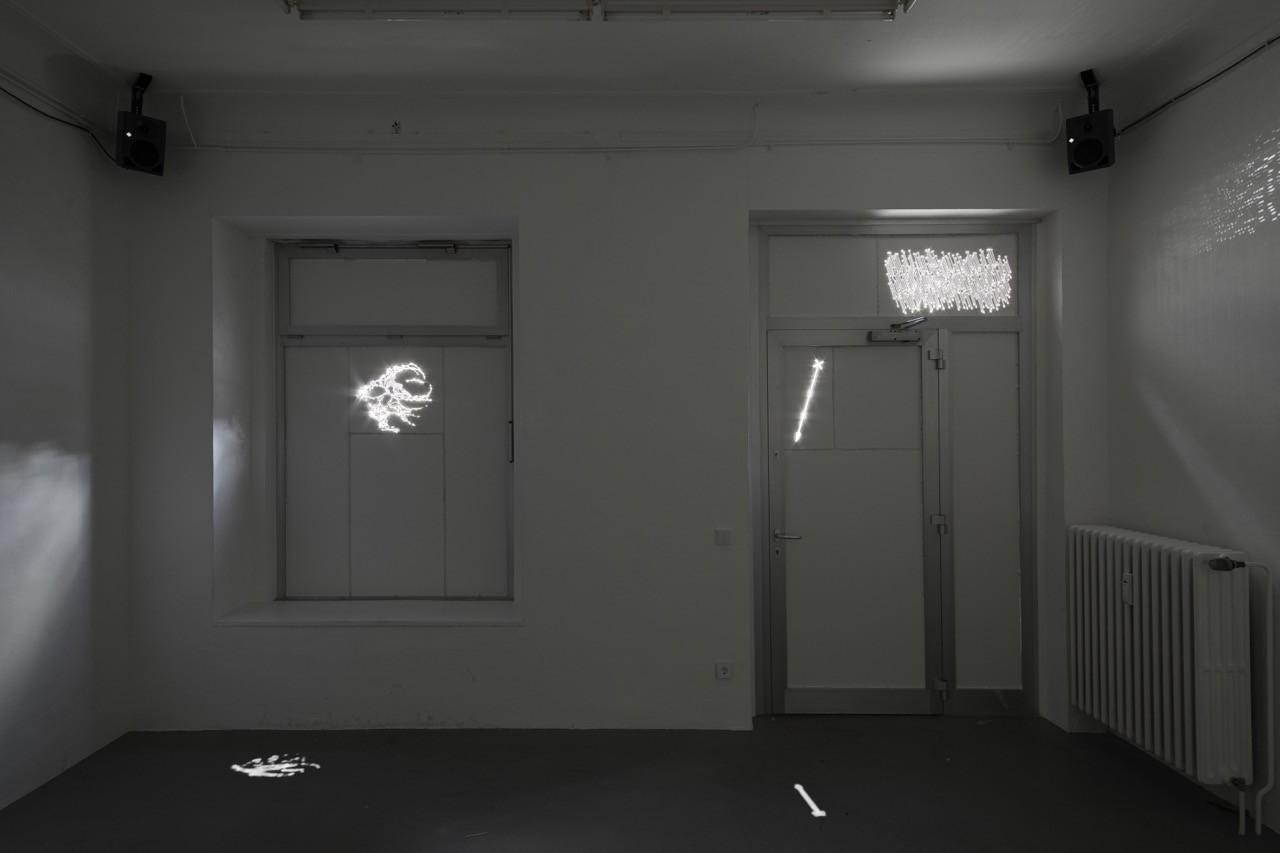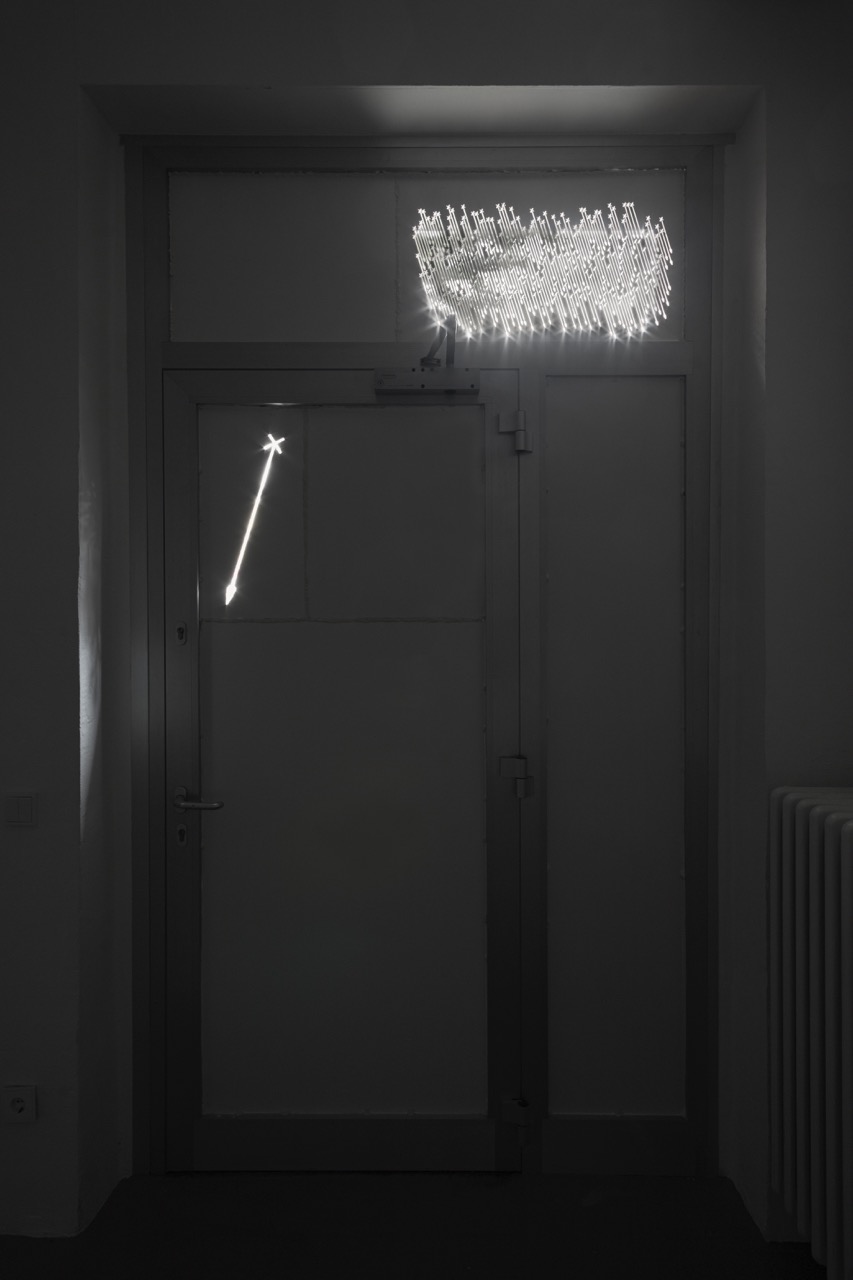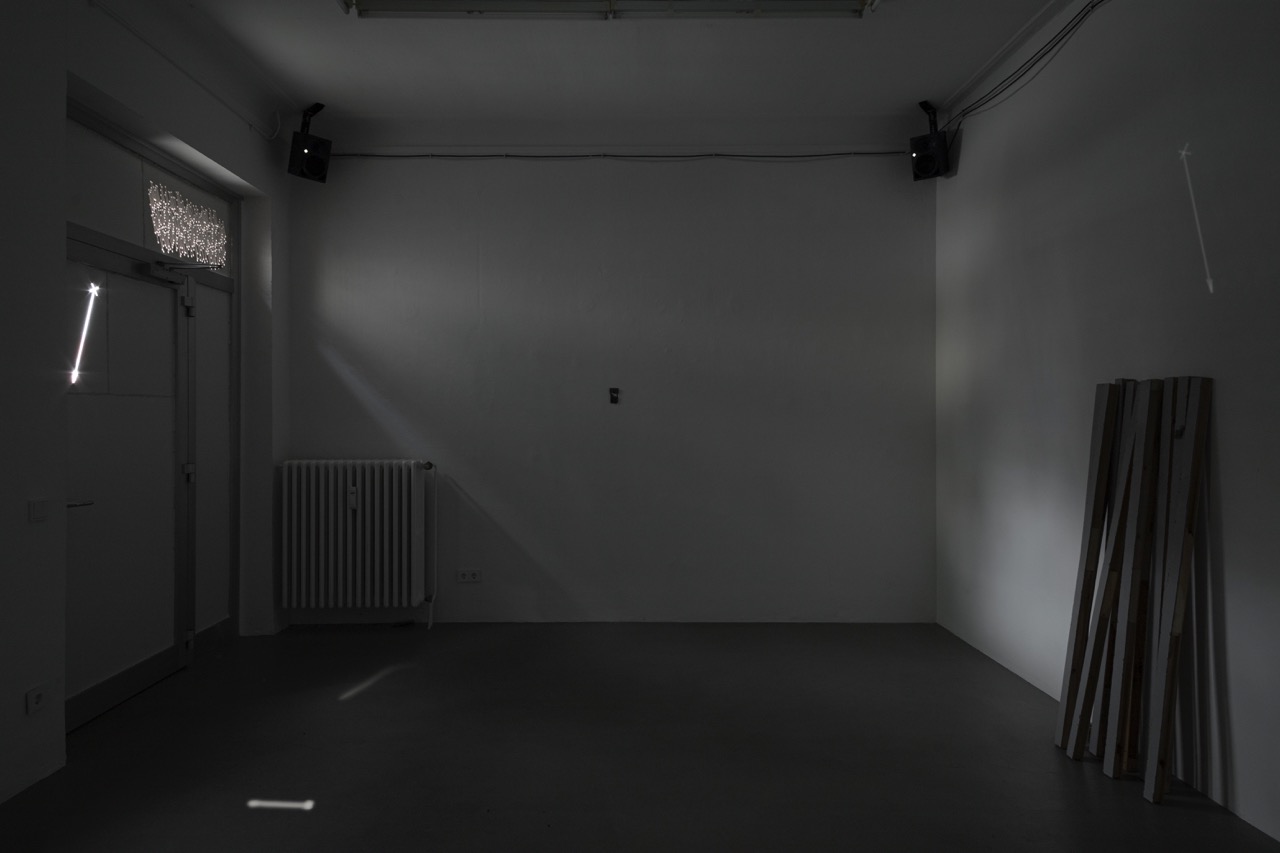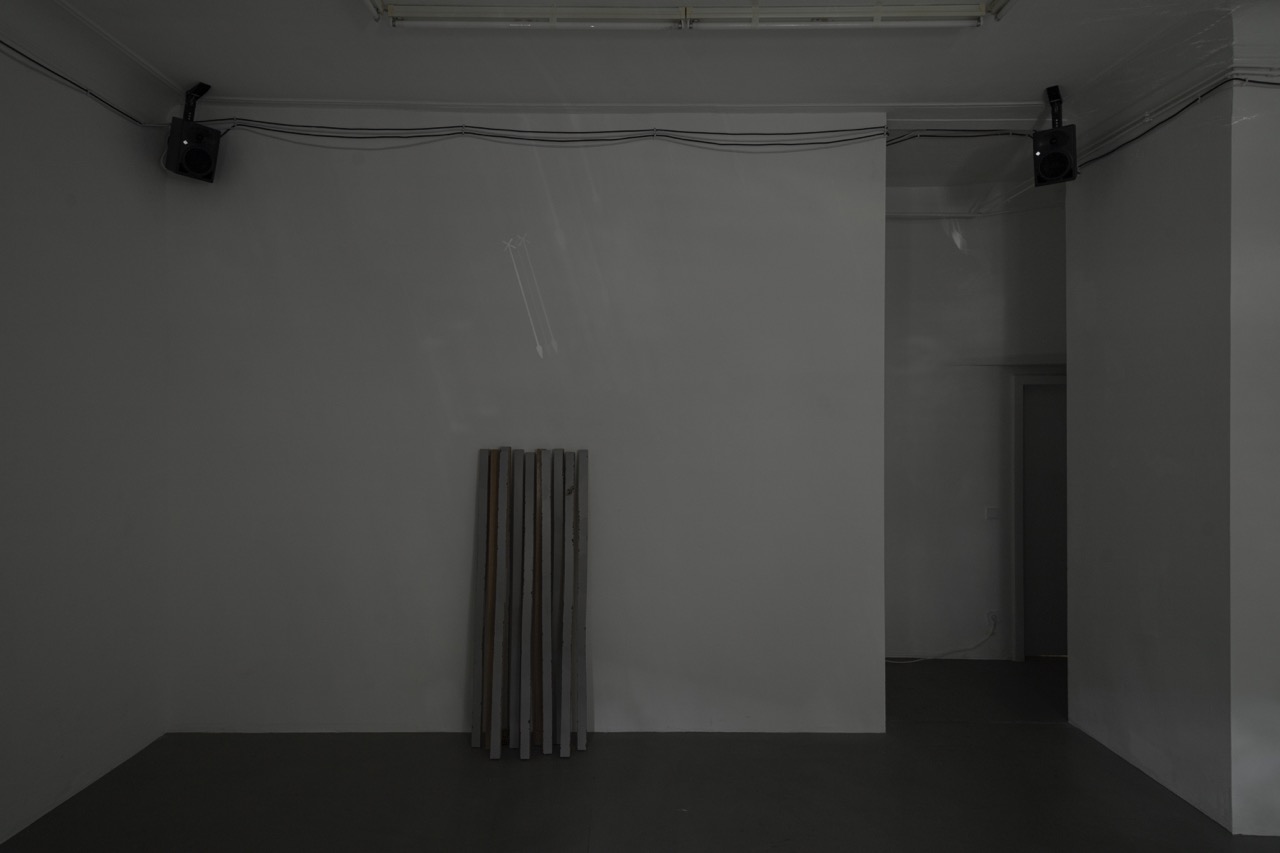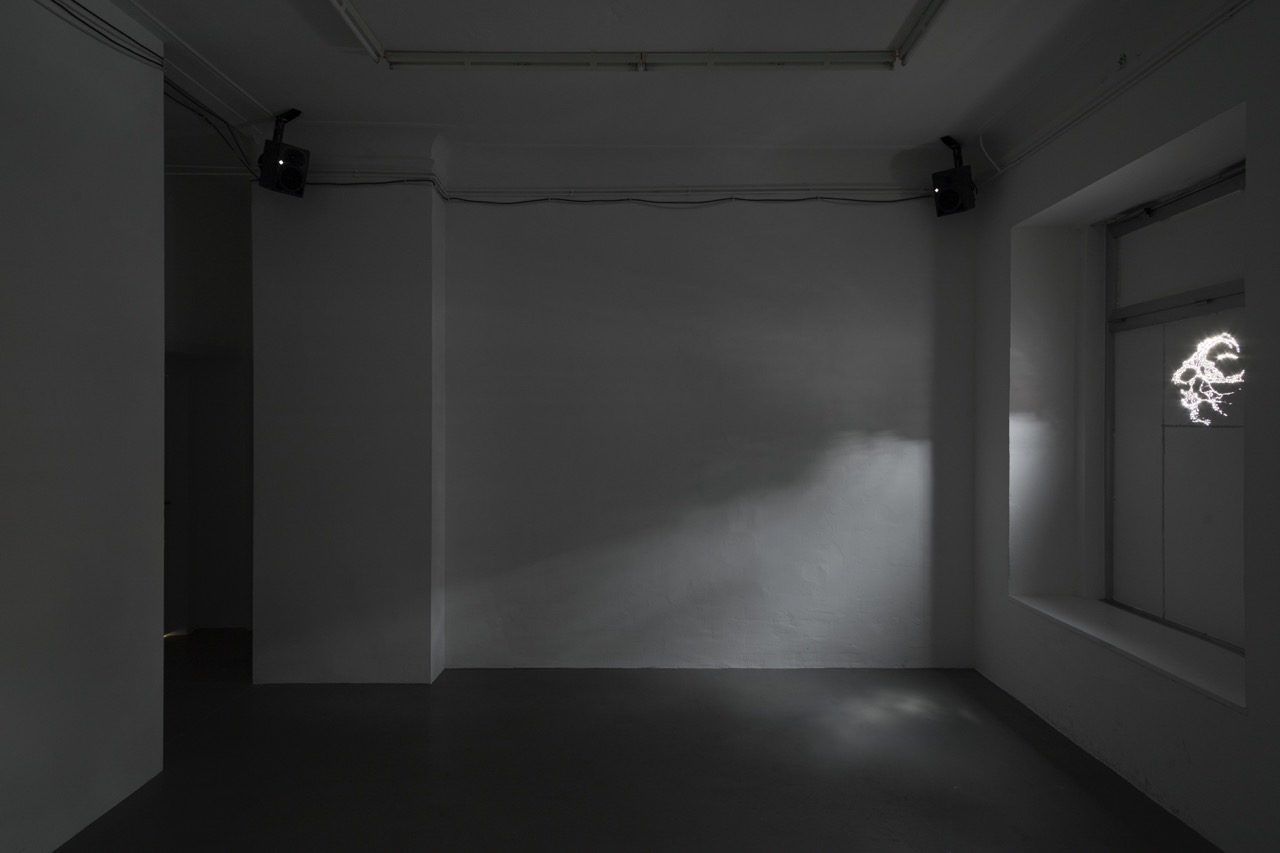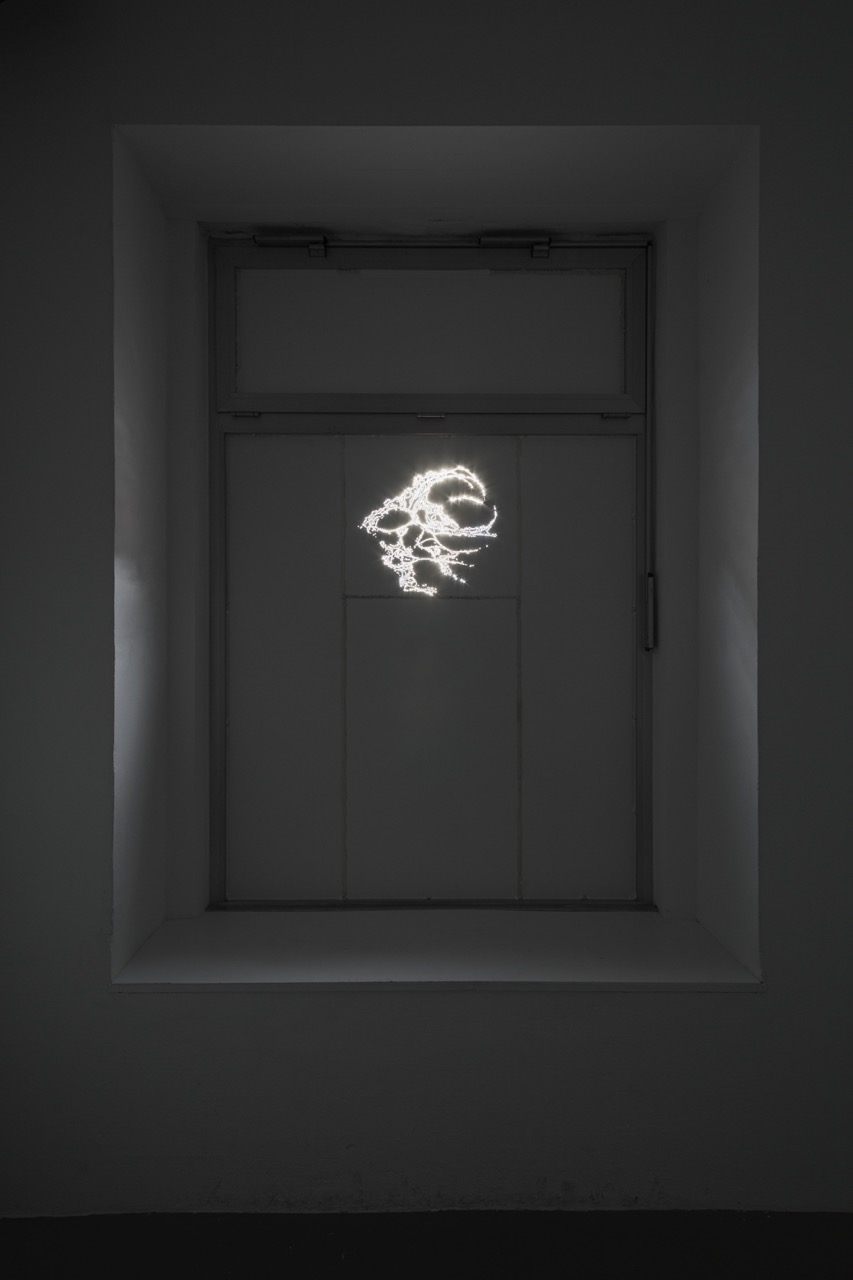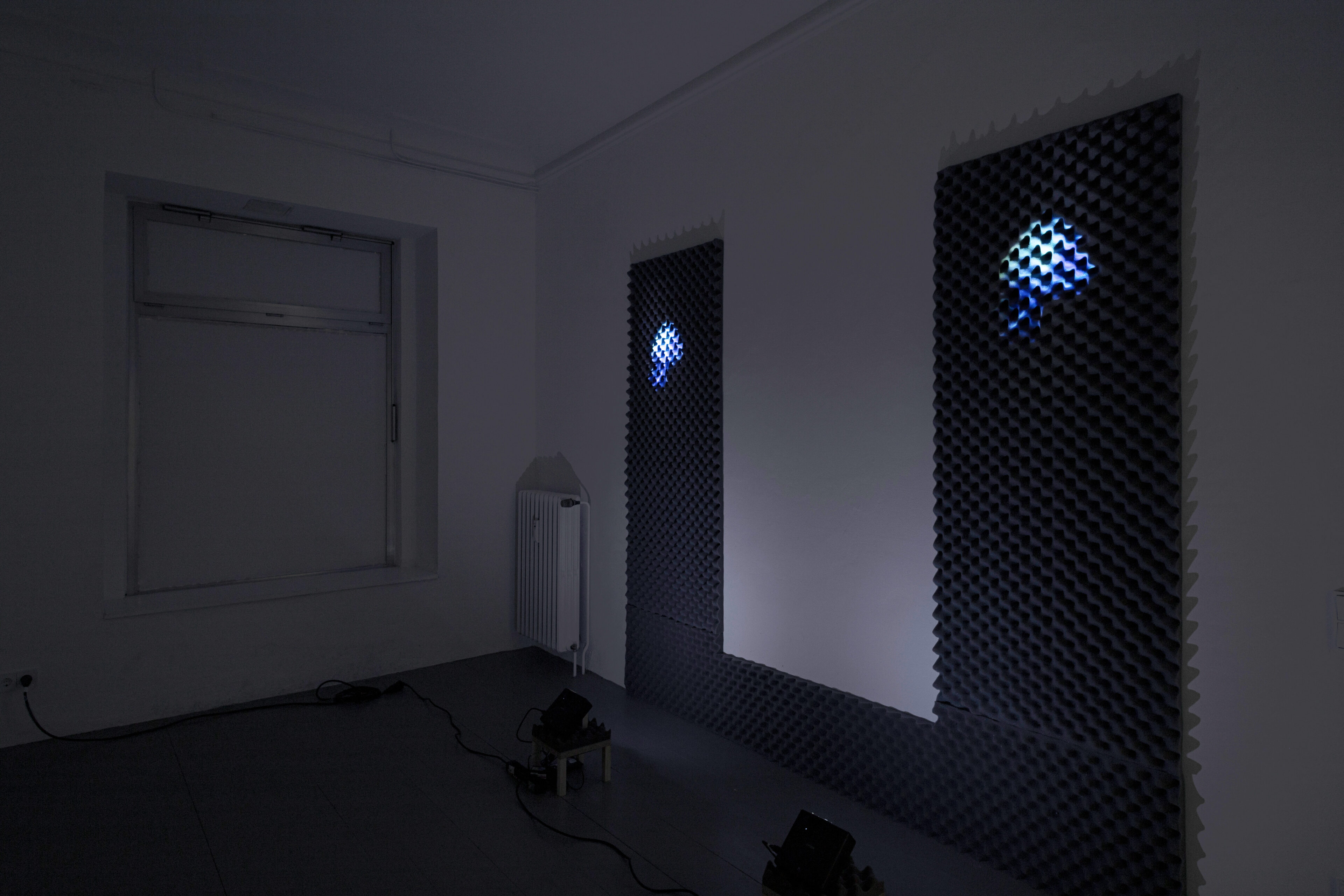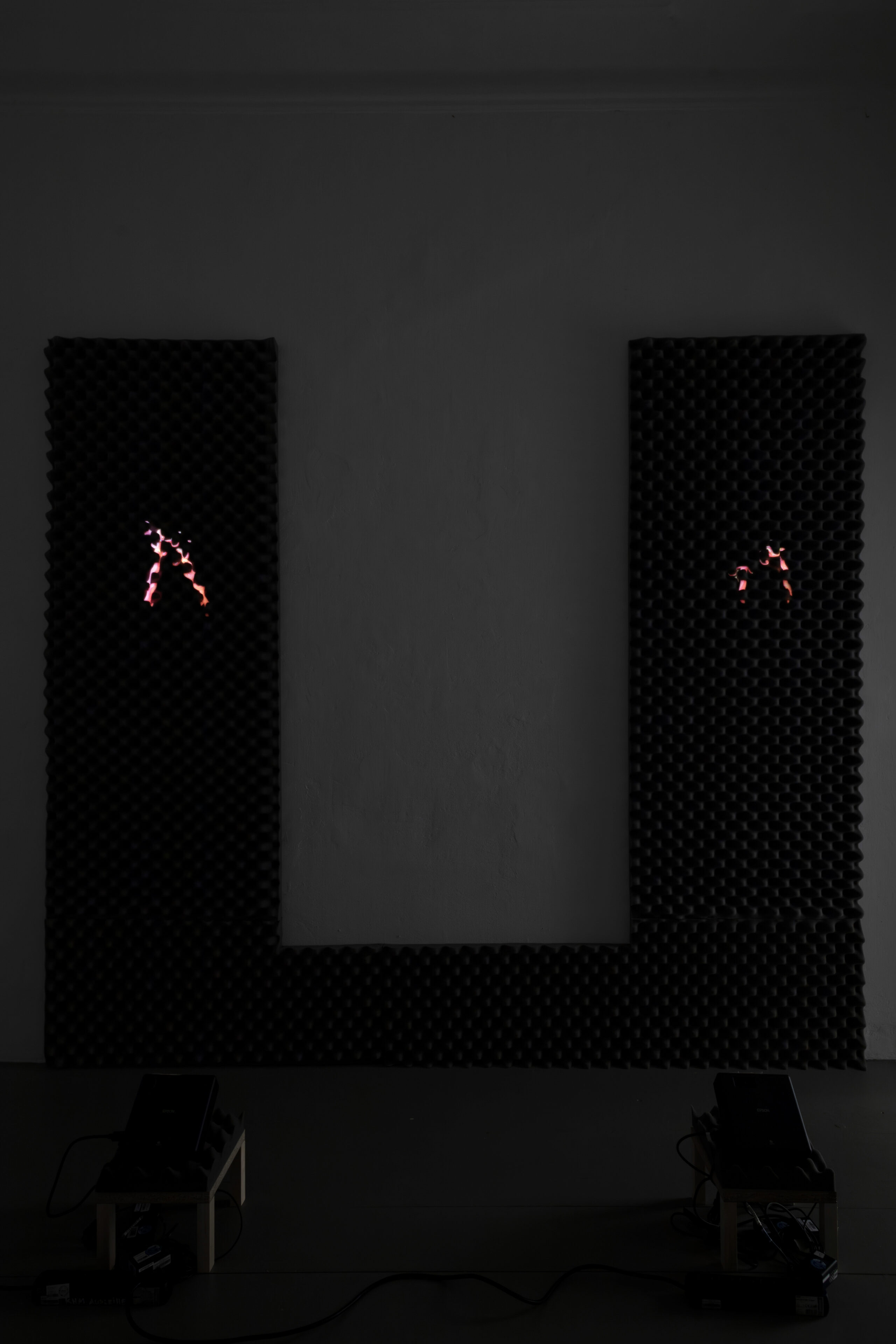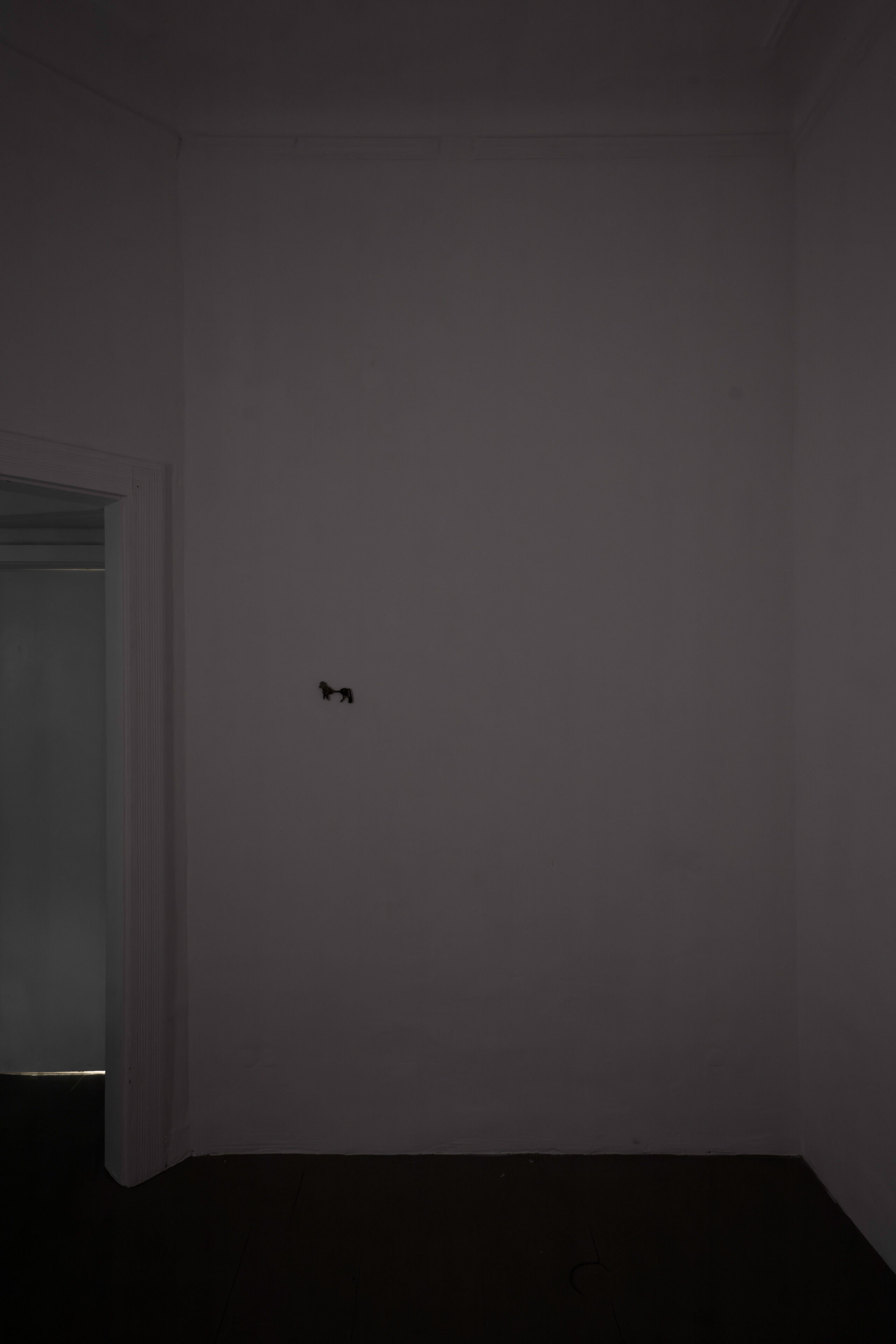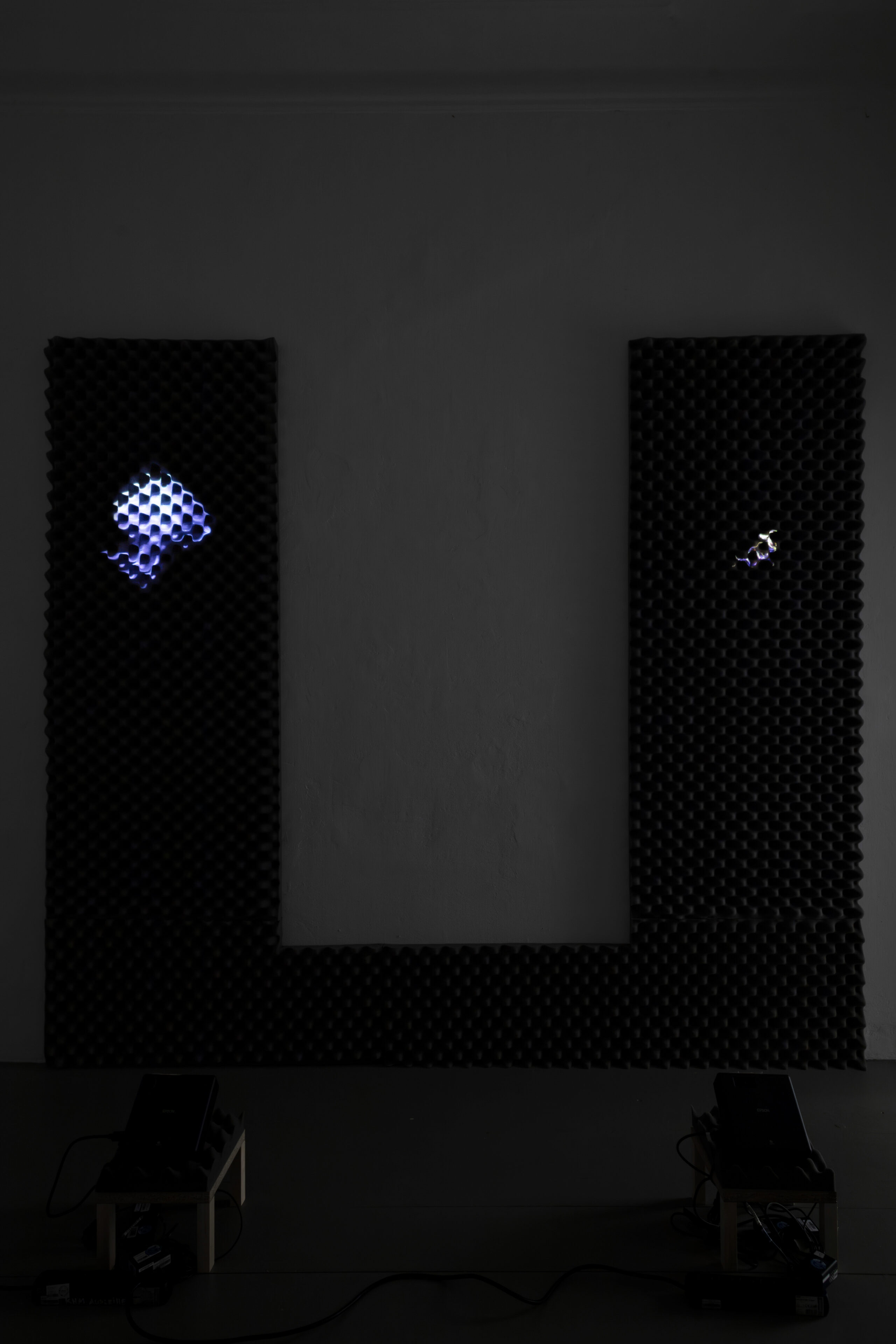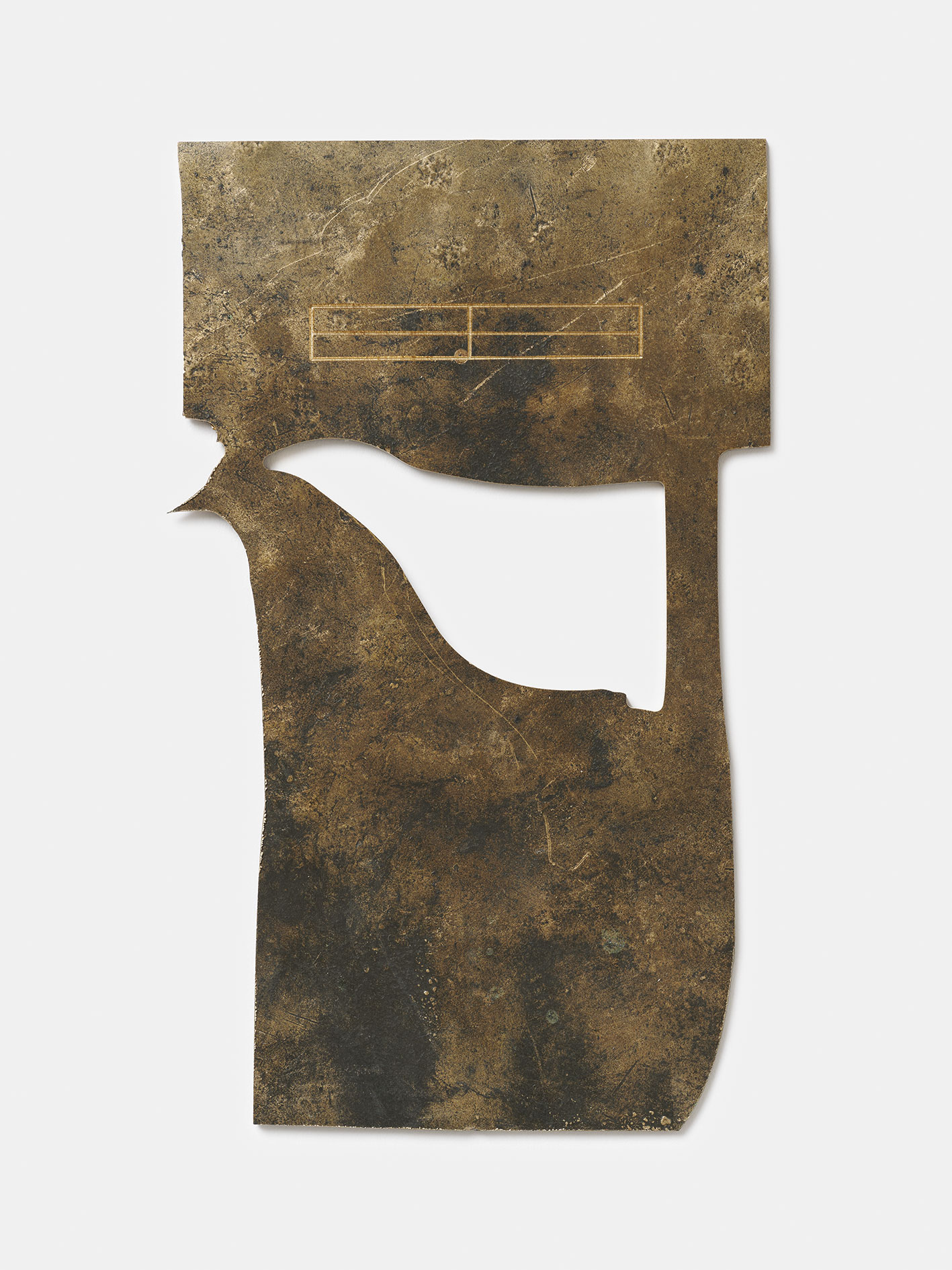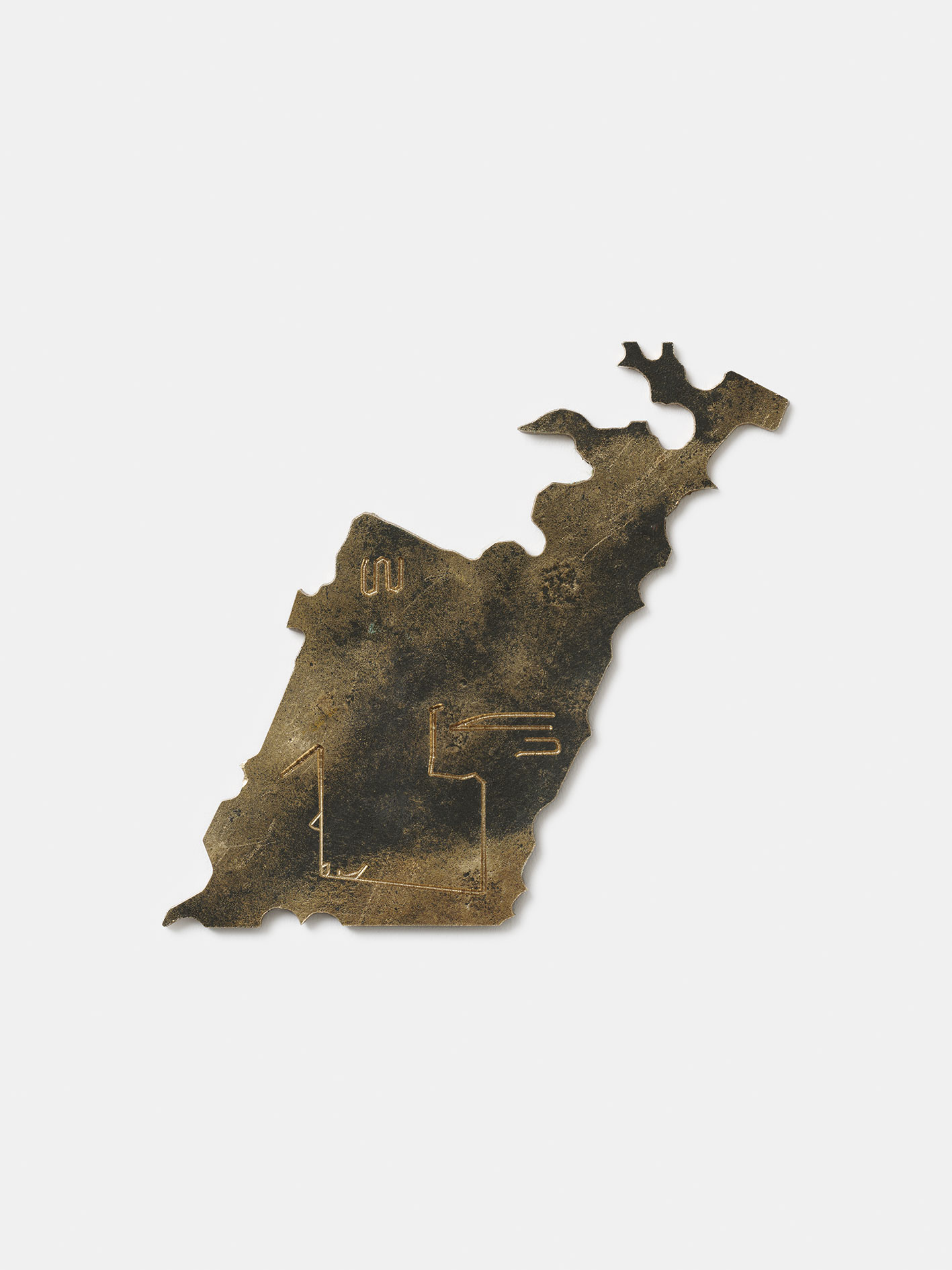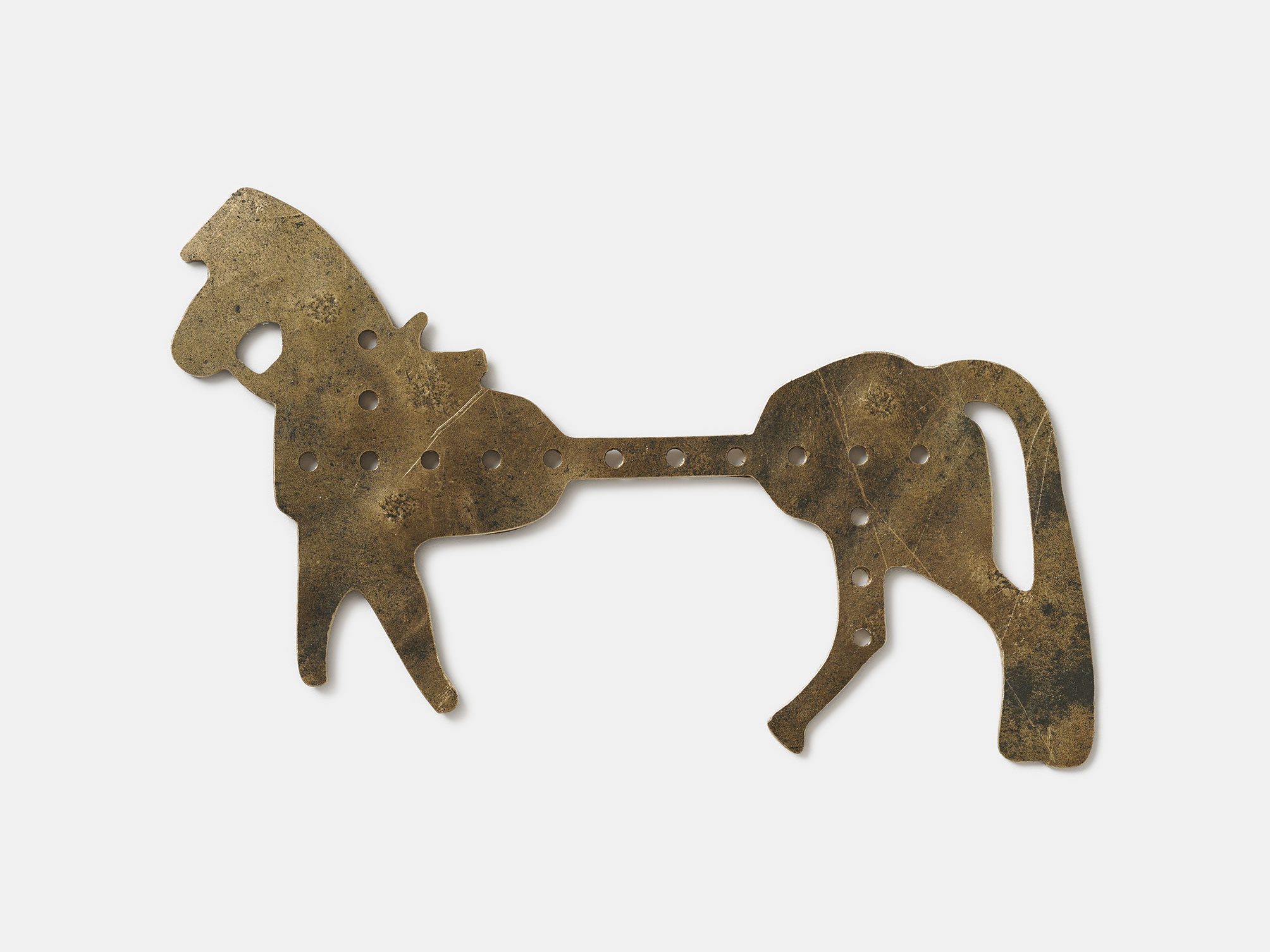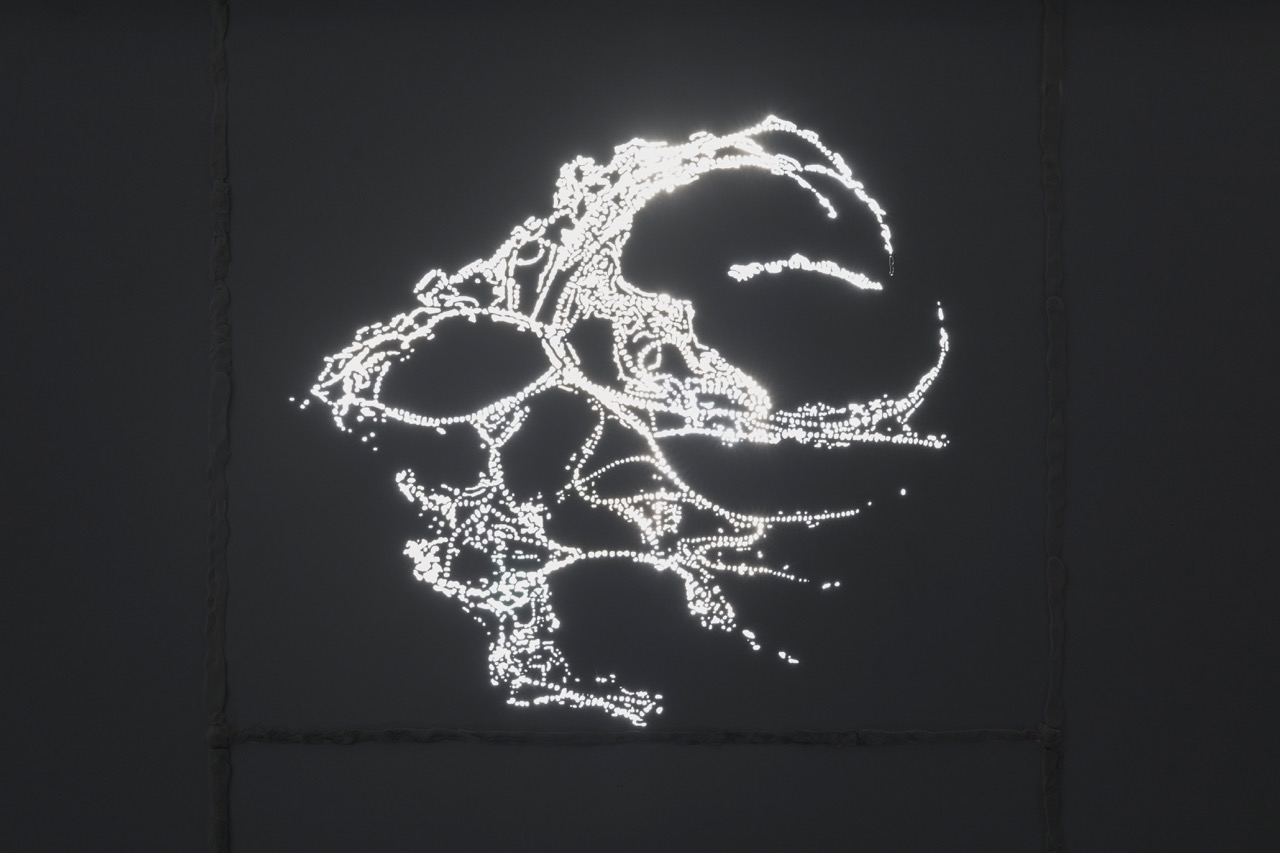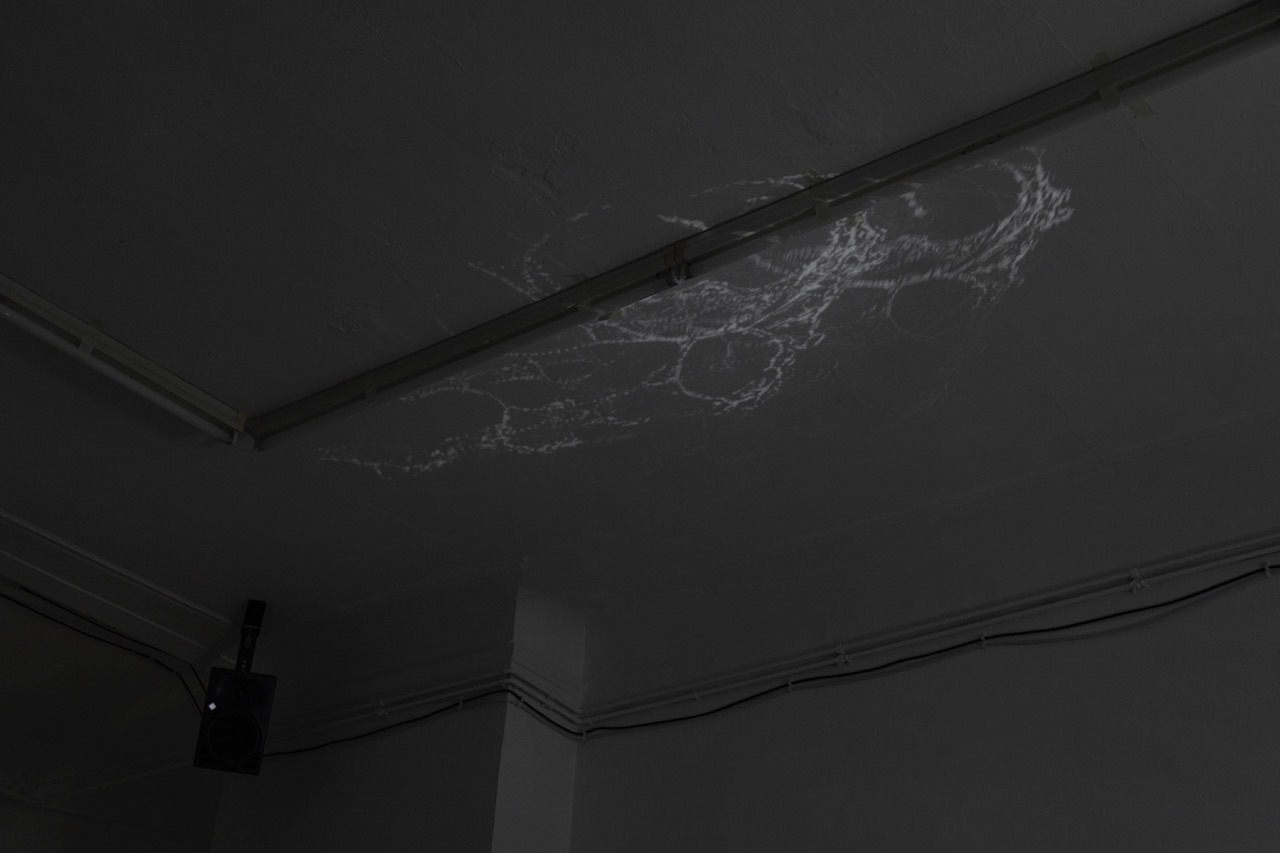–
Trotting horse with head tilted to the left. Tail runs in a straight line against back left leg to the end of the leg. Mane is very clear and made up of straight lines. Reins on horse run from mouth to neck to back in a row of three. Hoofs are broken and missing.
Installation Views
Video
Works
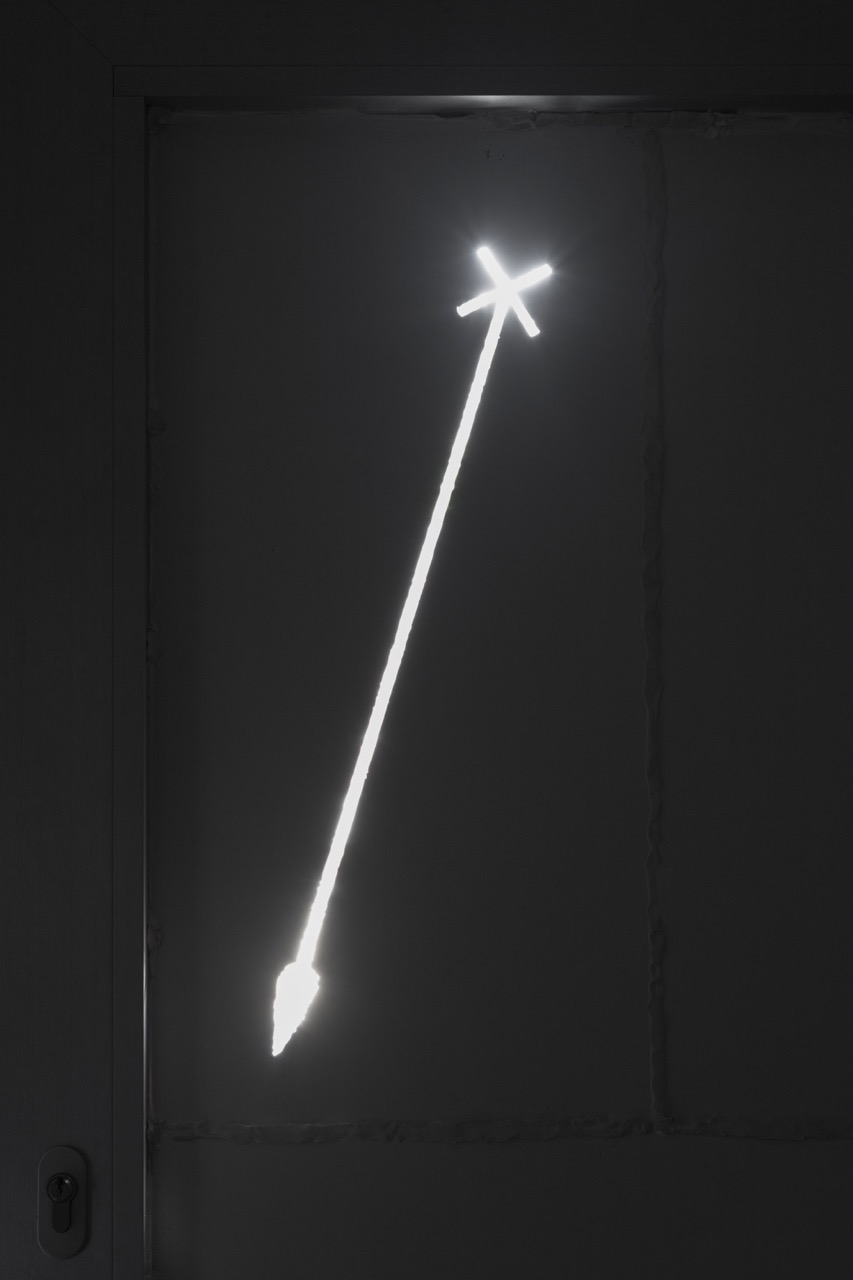
Untitled, 2024, MDF, light, pressure sensitive adhesive putty, silicone 200 x 80.4 x 0.3 cm (dimensions variable)
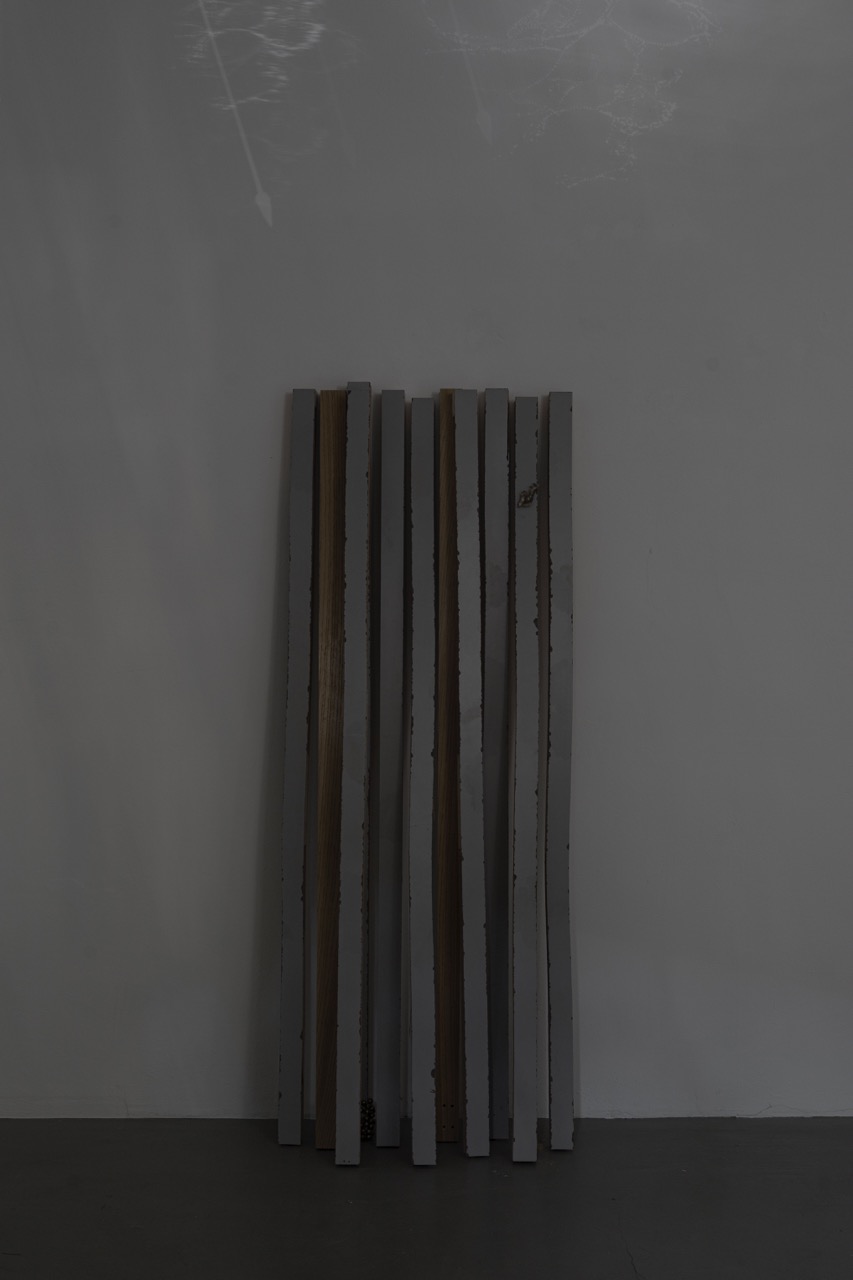
Challenge of an Underachiever, 2024, Wood, lack (11 sticks, each 159 x 5 x 4,2 cm) 155 x 65 x 5 cm (installation dimensions)
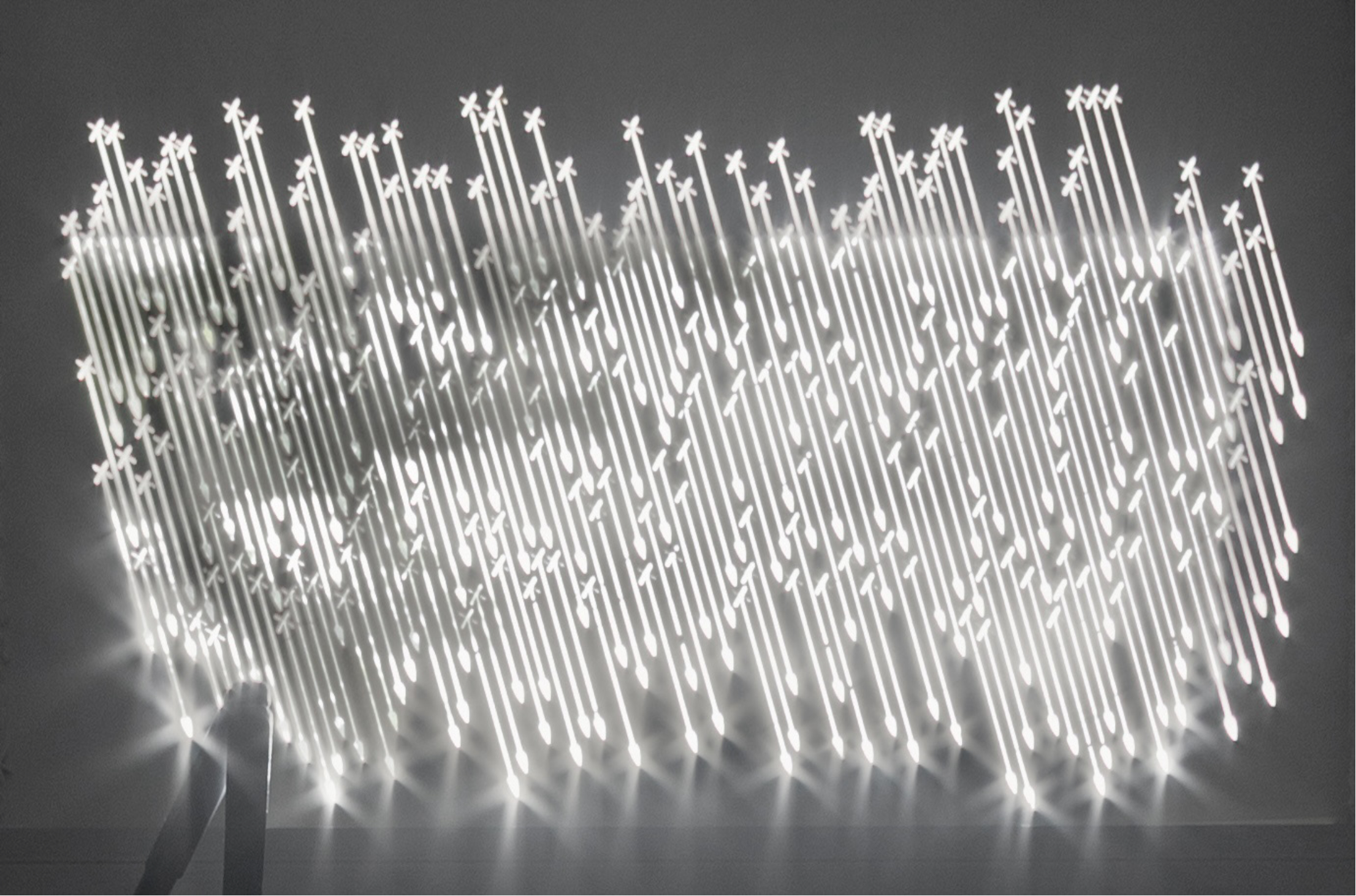
Untitled, 2024, MDF, light, pressure sensitive adhesive putty, silicone, 144 x 47.7 x 0.3 cm (dimensions variable)
Press Release
I.
You stop, you pause, you wait for an edge to appear only to slowly realize you might be the edge. All around you something else’s non-existence prompts the emergence of a space. Its contours are familiar, leeched from a fade. What is the sound of an edge appearing? An incessant flicker like the pull of a reel-to-reel tape recorder, a circular hum. The sound of a waiting room, an office building with stacks of identical floors, the elevator carriage before the doors part, before the ding. However temporary, there’s also something sustaining here, temporality feels material: thicker than vapor though still porous and defined by what it—that edge—starts to impinge upon. Like a shadow, like a bad mood. Like the queasy and indeterminate lead-up to the onset of the flu. Inside, cubicle-like with four walls made of muscle, tissue and glands that throb and buffer. A rush of blood to the ears meets the jangle of a fax machine making contact across phone lines. For a moment, informational coordinates roam free out there, fundamentally inside of yet seemingly beyond the boundaries of formal space. Administrative time is time to calibrate, is the sound of a tautology, is circular, is coming into being into order to be useless.
II.
And if this space were productive, generative even? Would its edge become a plateau or a body? A body like your own, but a replica that’s faster, purer, better at doing all the things. The poet Mia You describes the creation of her own hologram as container and projection, a sylph that can be worked hard, can perform exceptionally, and still wants more. “I’m just a text,” the hologram says, “there’s no work here, only long strings of characters. Umbilical cord, noose, my author is dead, that’s what she told me to tell you.” [1] But even You’s hologram can’t manage to be an artist, a teacher, a writer, and a good worker, someone who loves and can be loveable all at the same time. It’s too hard to be perfect, to be everywhere at once, to be warm and cold and somewhere in-between. The hologram could better be replaced by an impersonator. An impersonation can be a good match or somewhat misshapen: energy, commitment, and desire are what matter the most. In fact, a good impersonator is often a bad impersonator, a pleasant distortion of the real thing. An imperfect doubling creates gaps where things get lost or can never be found entirely. The impersonation is Sisyphean and mundane.
III.
Eventually this space—heavy, full, fleeting—is no longer useful. Contingency and accident override necessity. Some outside force presses on the temporary architecture and whatever occupants remain might ascend to a more progressive space or descend to somewhere worse. A portal is locked and coded, a pile of sticks gathered, a slackened chain, a set of brooms stand at the ready. There’s an echo, a distortion. Dissolution also runs the risk of drawing attention to its own construction: look what was here, look what could be! And so there remains a proximate edge, like light sneaking through a window signalling both freedom and its phantom. Words turning over and over to the point where a new sound and new meaning begin to emerge. Closed, a loop, but bending towards something different. The snail’s shell only makes sound when its empty, with its now-ornamental, exoskeletal score directing a composition in the round; a canon that turns towards—no—into itself. Closed, a loop, but the loop is hollow, a (former) home. “Always unimaginably excellent, even if in other respects hopeless,” Kafka proclaims through one of his many semi-fictionalized bureaucrats. What is bad for you, might be good for someone else; one person’s fate is another’s accident. Kafka’s “in other respects” imagines an opposing arc but also inevitability. The merge lane ultimately becomes the highway, what you’re supposed to be looking at is overshadowed by what you’re not. Closed, a loop, and the end is always somewhere in the middle.
Annie Goodner
[1] Mia You, “My Hologram,” 2021, https://brainwashfestival.nl/en/poem-by-mia-you/
